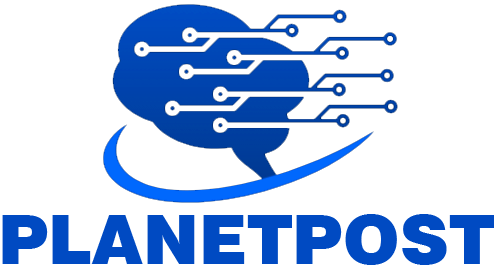As we navigate the recent artificial intelligence (AI) developments, a subtle but significant transition is underway, moving from the reliance on standalone AI models like large language models (LLMs) to the more nuanced and collaborative compound AI systems like AlphaGeometry and Retrieval Augmented Generation (RAG) system. This evolution has gained momentum in 2023, reflecting a paradigm shift on how AI can handle diverse scenarios not solely through scaling up models but through the strategic assembly of multi-component systems. This approach leverages the combined strengths of different AI technologies to tackle complex problems more efficiently and effectively. In this article, we’ll explore the compound AI systems, their advantages, and challenges in designing such systems.
What is Compound AI System (CAS)?
Compound AI System (CAS) is a system that integrates different components, including but not limited to, AI models, retrievers, databases, and external tools to tackle AI tasks effectively. Unlike older AI systems that use just one AI model like the Transformer based LLM, CAS emphasizes integration of multiple tools. Examples of CAS include AlphaGeometry where an LLMs is combined with a traditional symbolic solver to tackle Olympiad problems, and RAG system where an LLM is combined with a retriever and database for answering question related to given documents. Here, it is important to understand the distinction between multimodal AI and CAS. While multimodal AI focuses on processing and integrating data from various modalities—text, images, audio—to make informed predictions or responses like Gemini model, CAS integrates multiple interacting components like language models and search engines to boost performance and adaptability in AI tasks.
Advantages of CAS
CAS offers many advantages over traditional single model-based AI. Some of these advantages are as follows:
- Enhanced Performance: CAS combine multiple components, each specialized in a particular task. By leveraging the strengths of individual components, these systems achieve better overall performance. For example, combining a language model with a symbolic solver can lead to more accurate results in programming and logical reasoning tasks.
- Flexibility and Adaptability: Compound systems can adapt to diverse inputs and tasks. Developers can swap or enhance individual components without redesigning the entire system. This flexibility allows for rapid adjustments and improvements.
- Robustness and Resilience: Diverse components provide redundancy and robustness. If one component fails, others can compensate, ensuring system stability. For instance, a chatbot using retrieval-augmented generation (RAG) can handle missing information gracefully.
- Interpretable and Explainable: Using multiple components allows us to interpret how each component contributes to the final output, making these systems interpretable and transparent. This transparency is crucial for debugging and trust.
- Specialization and Efficiency: CAS uses multiple components specializing in specific AI tasks. For example, a CAS designed for medical diagnostics might incorporate a component that excels in analyzing medical images, such as MRI or CT scans, alongside another component specialized in natural language processing to interpret patient histories and notes. This specialization allows each part of the system to operate efficiently within its domain, enhancing the overall effectiveness and accuracy of the diagnostics.
- Creative Synergy: Combining different components unleashes creativity, leading to innovative capabilities. For instance, a system that merges text generation, visual creation, and music composition can produce cohesive multimedia narratives. This integration enables the system to craft complex, multi-sensory content that would be challenging to achieve with isolated components, showcasing how the synergy between diverse AI technologies can foster new forms of creative expression.
Building CAS: Strategies and Methods
To leverage the benefits of CAS, developers and researchers are exploring various methodologies for their construction. Mentioned below are the two key approaches:
- Neuro-Symbolic Approach: This strategy combines the strengths of neural networks in pattern recognition and learning with the logical reasoning and structured knowledge processing capabilities of symbolic AI. The goal is to merge the intuitive data processing abilities of neural networks with the structured, logical reasoning of symbolic AI. This combination aims to enhance AI’s capabilities in learning, reasoning, and adapting. An example of this approach is Google’s AlphaGeometry, which uses neural large language models to predict geometric patterns, while symbolic AI components handle logic and proof generation. This method aims to create AI systems that are both efficient and capable of providing explainable solutions.
- Language Model Programming: This approach involves using frameworks designed to integrate large language models with other AI models, APIs, and data sources. Such frameworks allow for the seamless combination of calls to AI models with various components, thereby enabling the development of complex applications. Utilizing libraries like LangChain and LlamaIndex, along with agent frameworks such as AutoGPT and BabyAGI, this strategy supports the creation of advanced applications, including RAG systems and conversational agents like WikiChat. This approach focuses on leveraging the extensive capabilities of language models to enrich and diversify AI applications.
Challenges in CAS Development
Developing CAS introduces a series of significant challenges that both developers and researchers must address. The process involves integrating diverse components, such as the construction of a RAG system involves combining a retriever, a vector database, and a language model. The availability of various options for each component makes design of compound AI system a challenging task, demanding careful analysis of potential combinations. This situation is further complicated by the necessity to carefully manage resources like time and money to ensure the development process is as efficient as possible.
Once the design of a compound AI system is set, it typically undergoes a phase of refinement aimed at enhancing overall performance. This phase entails fine-tuning the interplay between the various components to maximize the system’s effectiveness. Taking the example of a RAG system, this process could involve adjusting how the retriever, vector database, and LLMs work together to improve information retrieval and generation. Unlike optimizing individual models, which is relatively straightforward, optimizing a system like RAG presents additional challenges. This is particularly true when the system includes components such as search engines, which are less flexible in terms of adjustments. This limitation introduces an added layer of complexity to the optimization process, making it more intricate than optimizing single-component systems.
The Bottom Line
The transition towards Compound AI Systems (CAS) signifies a refined approach in AI development, shifting focus from enhancing standalone models to crafting systems that integrate multiple AI technologies. This evolution, highlighted by innovations like AlphaGeometry and Retrieval Augmented Generation (RAG), marks a progressive stride in making AI more versatile, robust, and capable of addressing complex problems with a nuanced understanding. By leveraging the synergistic potential of diverse AI components, CAS not only pushes the boundaries of what AI can achieve but also introduces a framework for future advancements where collaboration among AI technologies paves the way for smarter, more adaptive solutions.



